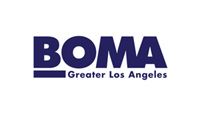
Choosing the right location for your business can determine its success. The location affects customer access, operational costs, and long-term growth. A strategic choice ensures your business aligns with market opportunities and avoids pitfalls. A thorough evaluation of various factors is essential to finding the optimal place for your expansion goals.
Analyze Market Demand in Potential Areas
Understanding market demand is an important first step. Research the demographics of your target area. Focus on age, income, lifestyle, and other relevant details. Identify whether your product or service aligns with local preferences—areas with high demand and low supply present excellent opportunities.
Evaluate competitor presence. A market saturated with businesses similar to yours may limit growth. On the other hand, areas with minimal competition may have unmet demand. Studying competitor performance can provide insights into customer expectations.
Leverage local market reports, customer surveys, and sales data to make informed decisions and confirm your business’s viability in the chosen area.
Accessibility and Convenience for Customers
Accessibility is key to ensuring a seamless customer experience. Choose a location that is convenient for your target audience. Proximity to residential neighborhoods or workplaces can boost foot traffic.
Assess the availability of public transportation and nearby parking facilities. Businesses located near bus stops or train stations enjoy higher accessibility. Prioritize locations with well-maintained roads and ease of entry.
Visibility is another critical factor. High-traffic areas such as malls or busy streets provide increased exposure. Even businesses reliant on online sales benefit from physical locations that build brand awareness.
Infrastructure and Utilities: Hidden Essentials
Reliable infrastructure and utilities are essential for smooth operations. Confirm the availability of uninterrupted electricity, high-speed internet, and water. These factors are particularly important for businesses with specific technical needs.
Evaluate the condition of the building and surrounding area. Issues such as outdated plumbing or frequent power outages can disrupt daily operations. Another key point is to ensure adequate storage and workspace.
Consider the surrounding environment. A poorly maintained area can negatively impact customer impressions. Look for clean, secure, and well-organized premises that align with your brand image.
Ensuring a Seamless Move to Your New Location for Your Business
Relocating your business to a new site is an exciting milestone that signifies growth but can pose significant challenges. The process requires meticulous planning and execution, from organizing the packing and transportation of equipment to ensuring proper setup at the new location. Therefore, rely on professional office movers to navigate these complexities effectively. These experts specialize in managing commercial transitions, ensuring your valuable assets are securely packed, efficiently transported, and strategically positioned for immediate use.
Entrusting your move to experienced office movers can minimize operational downtime, safeguard your equipment, and reduce the stress of the relocation process. This proactive approach allows you to maximize your new location’s opportunities while maintaining uninterrupted service and customer confidence.
Financial Considerations: Balancing Costs and Value
Financial factors heavily influence location decisions. Compare rental or purchase costs in various areas. Expensive urban areas may provide better exposure but could strain budgets. Suburban locations may offer affordability but could lack foot traffic.
Calculate recurring expenses, including taxes, commercial property insurance, and maintenance. Some locations may offer tax incentives to attract businesses. Research these opportunities and incorporate them into your budget planning.
Assess the cost of setting up your operations, including renovations, utility installations, and furniture. Then, aim for a location that balances costs with long-term potential.
Assessing Local Business Environment and Policies
The local business environment plays a significant role in shaping your success. Review zoning laws to ensure the location supports your business type. Non-compliance can lead to legal and financial complications.
Investigate local policies that impact businesses, such as licensing requirements or noise regulations. Some areas offer subsidies or grants to encourage business expansion. Taking advantage of these incentives can improve profitability.
In contrast, areas with restrictive regulations may slow your setup process. Choose locations with business-friendly and streamlined policies.
Proximity to Suppliers and Partners
Staying close to suppliers and partners reduces logistics costs. A location near key suppliers also ensures timely delivery of goods and materials, which is especially important for industries with high inventory turnover.
Evaluate the transportation network connecting your location to suppliers. Reliable roads and shipping infrastructure ensure uninterrupted supply chains. Besides, proximity to partners facilitates collaboration and fosters stronger relationships.
Reduced transportation time also benefits customers. Faster restocking ensures products are always available. That builds trust and improves customer satisfaction.
Cultural Fit and Workforce Availability
Aligning your location with local culture can enhance brand acceptance. Understand the social norms, language, and behaviors of the area. A positive cultural fit strengthens customer relationships.
Workforce availability is equally important. Assess the local talent pool to ensure you can hire skilled employees. Check for nearby universities or training centers that could provide future hires.
The cost of labor in the area should also be considered. Higher wages in urban regions may strain budgets, whereas rural areas often offer lower costs. Finding a balance between skill availability and affordability is crucial.
Long-Term Growth Prospects in the Chosen Area
Assessing the potential for future growth in your chosen area is vital. Study population trends to determine whether the area is expanding or declining. A growing population increases the demand for goods and services.
Analyze upcoming infrastructure projects. New roads, airports, or commercial hubs can significantly boost a location’s attractiveness. Economic stability is another factor to consider. Areas with steady growth provide a secure environment for business.
Hence, think beyond immediate needs and focus on long-term potential. Choose a location for your business that supports scalability and aligns with future goals.
Summary: The Path to Informed Decisions
Selecting the right location for your business is a strategic process. It requires thoroughly evaluating market demand, accessibility, infrastructure, and financial factors. Cultural fit, workforce availability, and long-term growth prospects also play critical roles.
In short, the success of your expansion depends on aligning the location with your business objectives. A carefully chosen location ensures operational efficiency and sustained growth. Take time to assess all factors and make a well-informed decision. This approach will position your business for long-term success.


